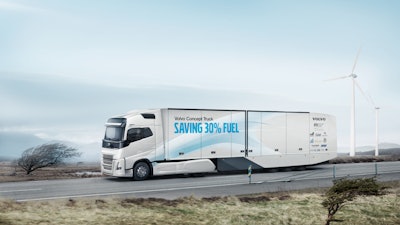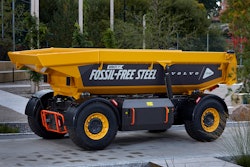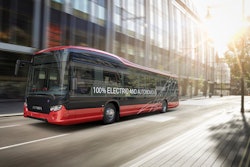
On February 18, the EU reached the decision to regulate CO2 emissions from heavy-duty vehicles. To speed up development, Volvo Trucks continues to invest heavily in more climate-friendly transport solutions. But additional measures are needed to stimulate demand for vehicles with low CO2 emissions.
“Cutting climate emissions from heavy-duty vehicles is an incredibly important task, and it’s fundamental to our initiatives in sustainable transport. At Volvo Trucks, we’re well-positioned to take on this challenge. It’s natural for the EU to now introduce limits on CO2 emissions. In order to speed up the transition, we would however also like to see stronger financial incentives for the customers who take the lead and choose more climate-friendly vehicles,” says Roger Alm, President of Volvo Trucks.
Electric trucks can contribute to reducing CO2 emissions. Volvo Trucks launched its first truck models with electric powertrains in 2018 and will start series production this year.
“We’re at the stage where the technology will soon be ready for wider applications in heavy-duty transport. If demand is stimulated and the new charging infrastructure network is expanded, the volume will also be able to increase at a faster rate than would otherwise be possible,” says Lars Mårtensson, Director of Environment and Innovation at Volvo Trucks.
Other climate solutions include natural gas and biogas. Running a Volvo FH LNG on natural gas cuts CO2 emissions by about 20 percent compared to diesel. With biogas, the tank-to-wheel emissions can be cut by 100%.
At the same time, Volvo Trucks is continuing to develop the diesel trucks that currently make up the absolute majority of its sales. Since the early 1990s, the fuel usage and CO2 emissions of a typical long-distance Volvo truck have decreased by about 20%*, and there is room for additional improvements with more efficient powertrains, lower rolling resistance, and better aerodynamics. Each truck needs to be optimized for its specific transportation task.
While the emission limits imposed by the EU set a clear timetable for vehicle manufacturers, the goal – improving fuel efficiency and reducing the climate impact – has been a top priority for the industry for some time now, in part because fuel usage makes up about one-third of the costs for a transport company.
“Our ambition has always been to be able to offer our customers the optimal, energy efficient comprehensive solution for the transport task at hand,” says Mårtensson.
Among Volvo Trucks’ customers, as well as many customers of transport services, there is a great amount of interest in making transport more climate friendly. Expanding investment subsidies or tax breaks for those who choose to invest in climate-efficient technology would make a big difference.
“New technologies that contribute to cutting CO2 emissions need to be able to enter the market rapidly. Fast-tracking the reviewing and certification process by the authorities would speed up the introduction of new innovations within the transport sector.”
The EU framework covers emissions from the actual vehicles, but Volvo Trucks takes a broader approach to the question.
“If all parts of the transport system work together toward the same goal, we can reduce the climate impact much more. Better logistics, increased access to biofuels, fuel-efficient training for drivers, aerodynamic trailers, improved road standards, and expanded opportunities to use high-capacity vehicles are just some of the ways in which other parties can contribute,” says Mårtensson.
Facts about the new regulation
- The new EU regulation for CO2 emissions from heavy-duty vehicles applies to vehicles manufactured and registered in or after 2019.
- Average emissions are to be cut by 15% starting in 2025 and by 30% starting in 2030 (compared to 2019 values).
- The reduction levels refer to the average emissions from trucks manufactured by the respective manufacturers compared to the 2019 industry average.
- Heavy-vehicle road traffic accounts for almost 5% of the total EU greenhouse gas emissions.
 Volvo Trucks' infographic on the new carbon dioxide emissions regulation.Volvo Trucks
Volvo Trucks' infographic on the new carbon dioxide emissions regulation.Volvo Trucks



















